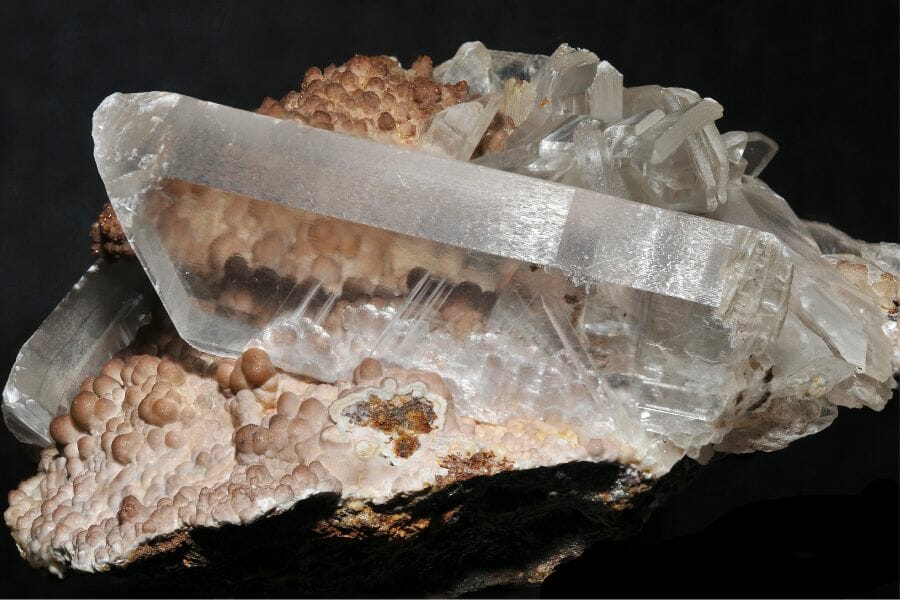Finding crystals can be a rewarding adventure, offering a unique way to explore the natural beauty and geology of the region. Whether you’re a seasoned rockhound or just getting started, knowing where to look is key to uncovering these hidden treasures.
In this state, a variety of locations provide opportunities to discover different types of crystals. From rocky outcrops in the mountains to stream beds that carry sparkling surprises, each area offers its own unique finds for those willing to search.
We can help you get started with some places you can explore for crystals below!
Crystals you can find in the US
The United States offers a wide range of crystals that reflect its diverse geology. From vibrant gems to more subtle mineral formations, there’s something to discover in nearly every region.
Calcite
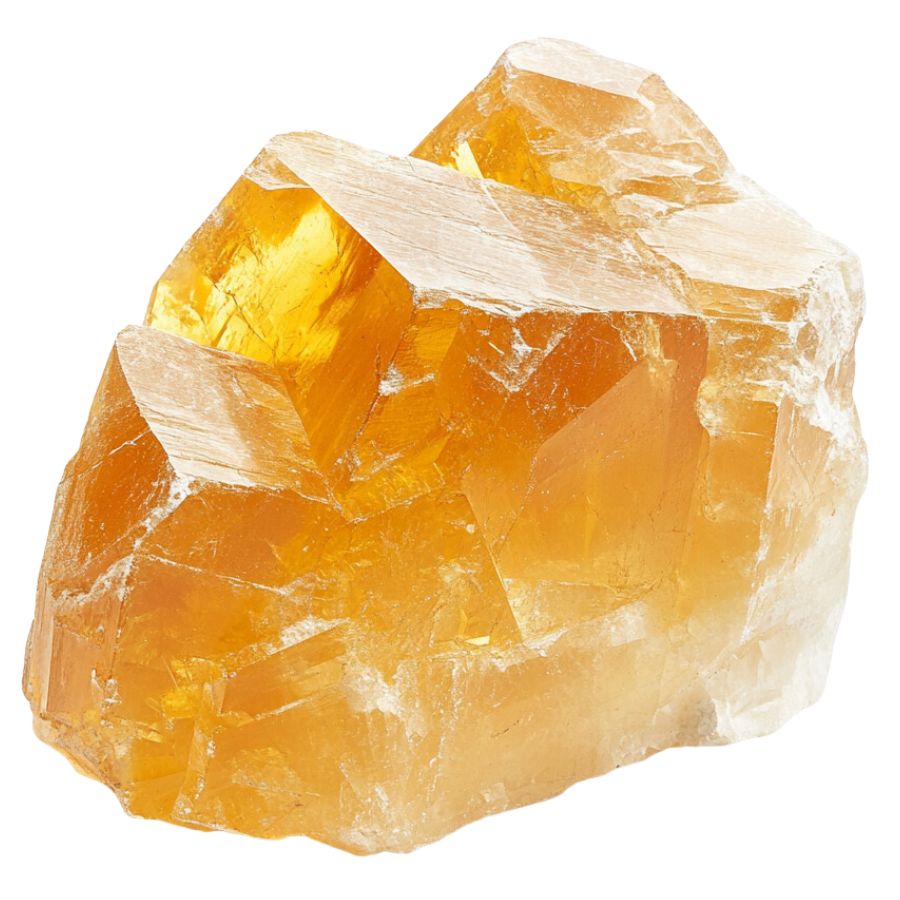
With a variety of forms and a unique property of double refraction, calcite allows objects viewed through the crystal to appear doubled. This mineral can appear in a spectrum of colors, with pure forms typically being transparent or white.
In addition, calcite reacts vigorously with acids, which aids in distinguishing it from other minerals. It also frequently contributes to the structure of sedimentary rocks such as limestone.
Gypsum
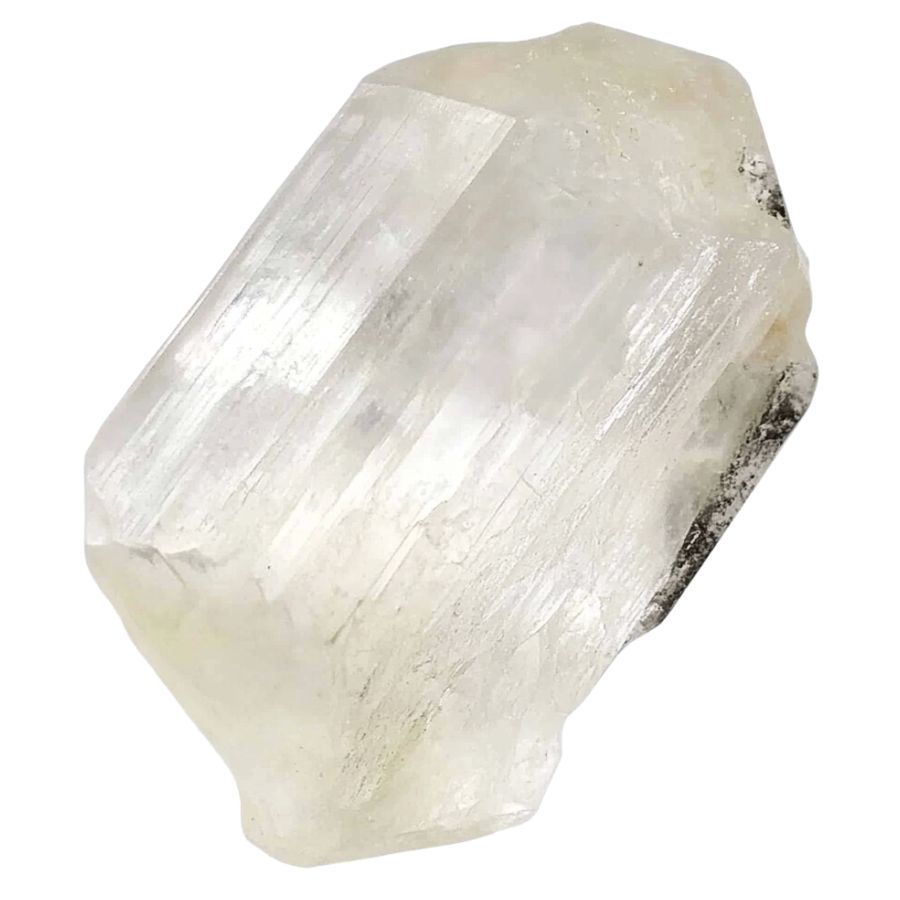
Gypsum’s notable softness allows it to be easily scratched with just a fingernail, often presenting as white or very light-colored in its pure form.
It manifests in both crystalline forms, like selenite, and massive forms such as alabaster, making it versatile in use and appearance.
Gypsum is also essential in the construction industry and is a key component in the manufacture of plaster and drywall.
Fluorite
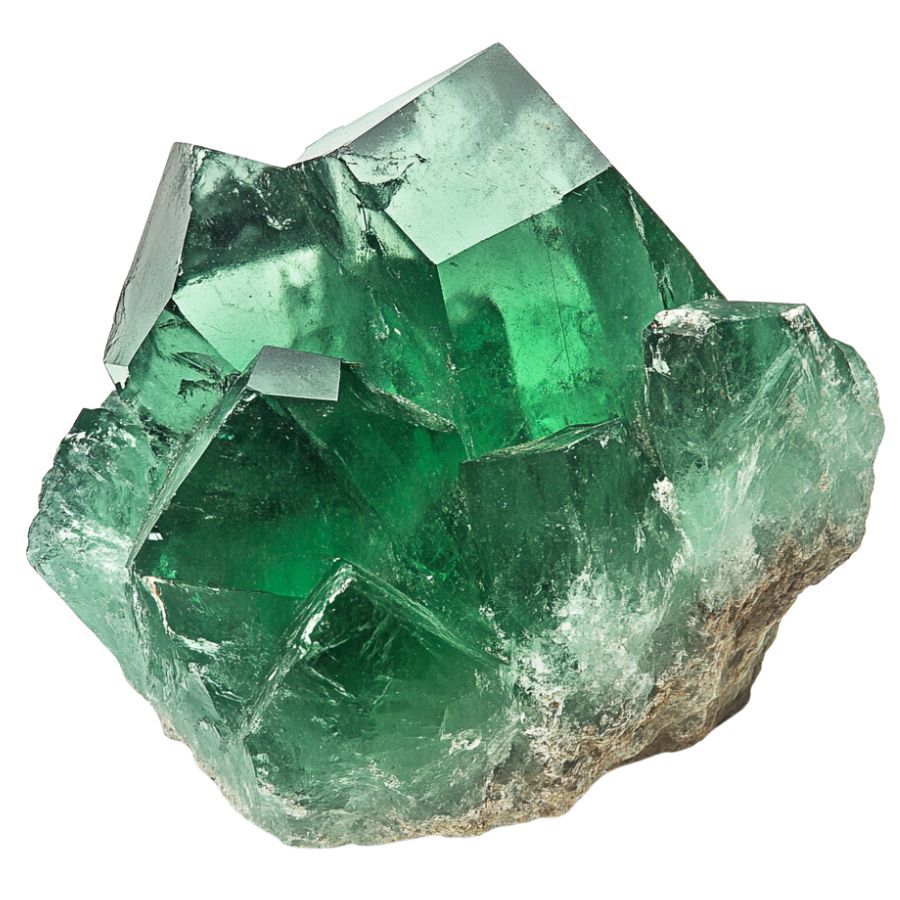
Fluorite comes in a wide range of vibrant colors, including purples, greens, blues, and yellows, and is known for forming in well-defined cubic crystals.
Beyond this, fluorite exhibits fluorescence under ultraviolet light! It can also be used in various industrial applications, including as a flux in steelmaking.
Galena
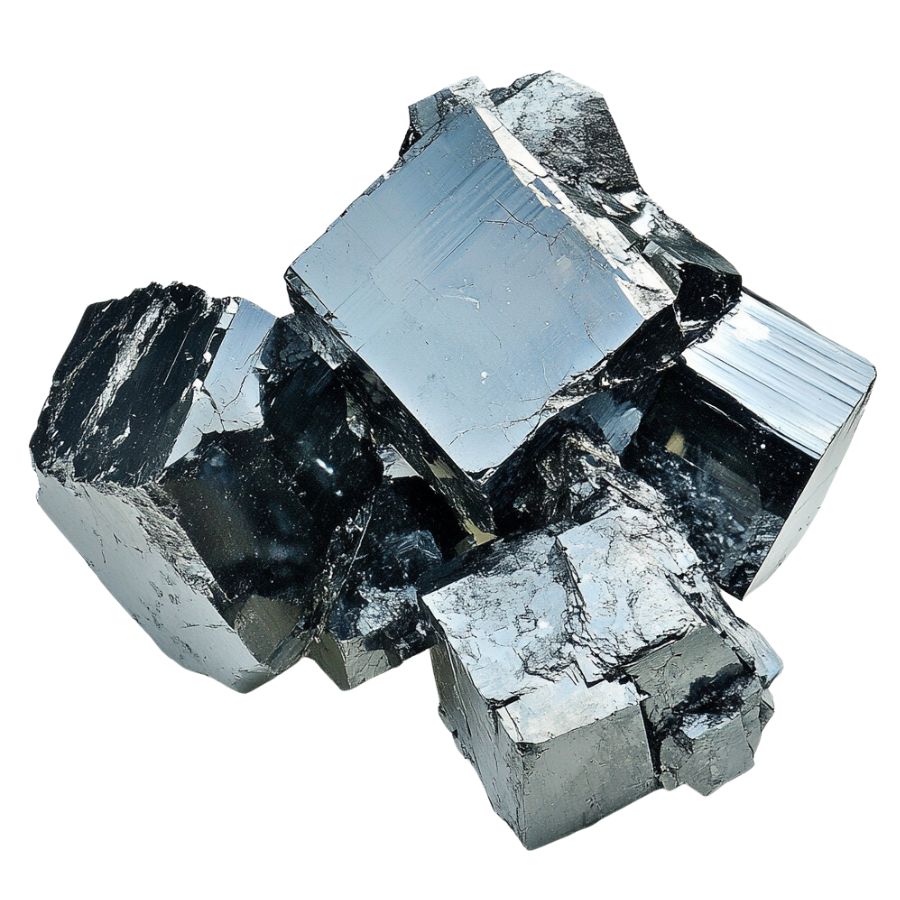
Galena distinguishes itself with a metallic luster and high density, typically found in a cube-like form. It serves as the primary ore of lead, making it important in the metal industry, while its shiny, silver color attracts collectors.
Not only does its appearance make it a subject of interest, but its weight and texture provide tangible lessons in mineral density and metallic properties. Galena also often contains traces of silver, adding to its commercial and educational value.
Corundum
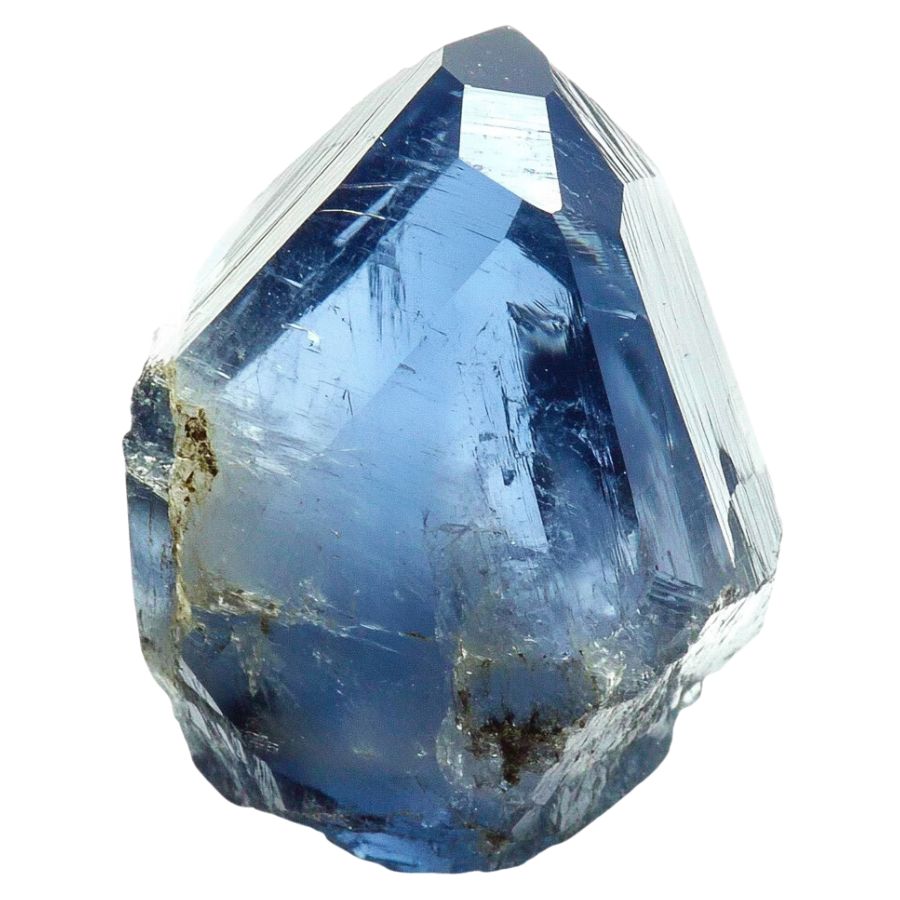
Corundum is a mineral that comes in a variety of colors, though it is typically transparent or gray. Its most famous forms are sapphires and rubies, which are prized for their vibrant blue and red hues.
The mineral is known for its remarkable hardness, ranking just below diamond on the Mohs scale. This durability makes corundum ideal for industrial abrasives and cutting tools, as well as a popular choice for fine jewelry.
Quartz
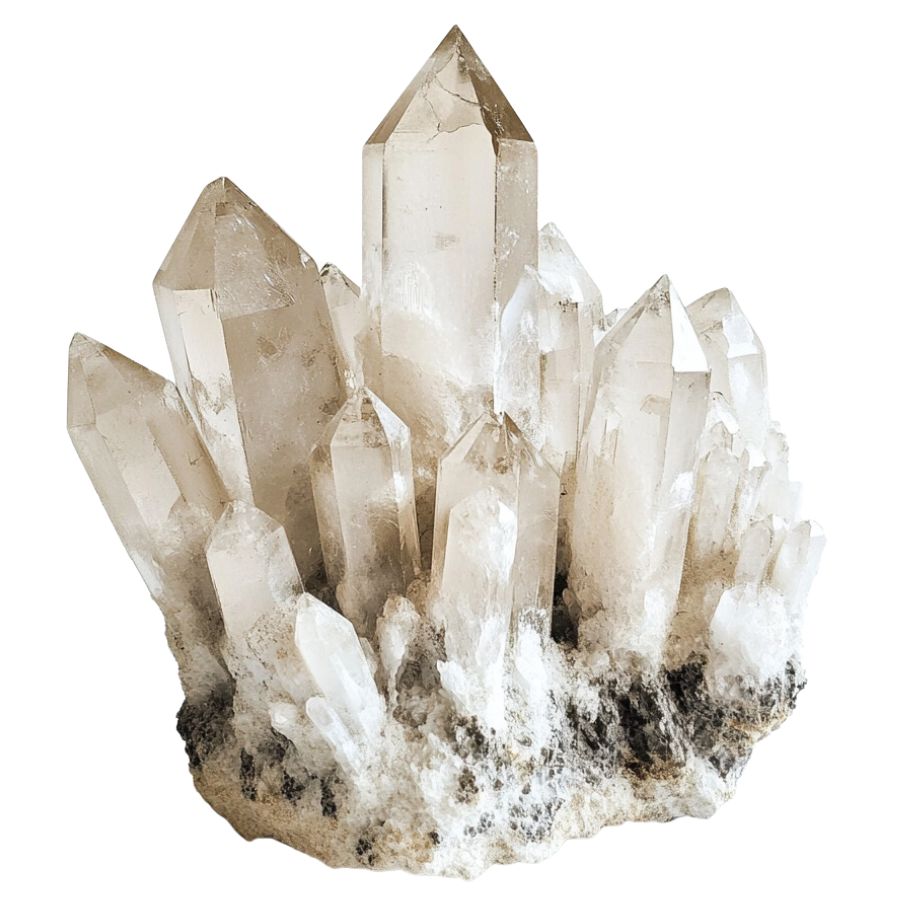
Quartz is among the most common minerals in the Earth’s crust and is prized for its durability and variety. It forms in a wide range of colors and types, from clear rock crystal to purple amethyst.
The mineral is notable for its hardness and durability, which contribute to its use in a variety of applications. Quartz is also popular in the manufacturing of electronics and watches due to its piezoelectric properties, which allow it to convert mechanical pressure into electrical energy.
Pyrite
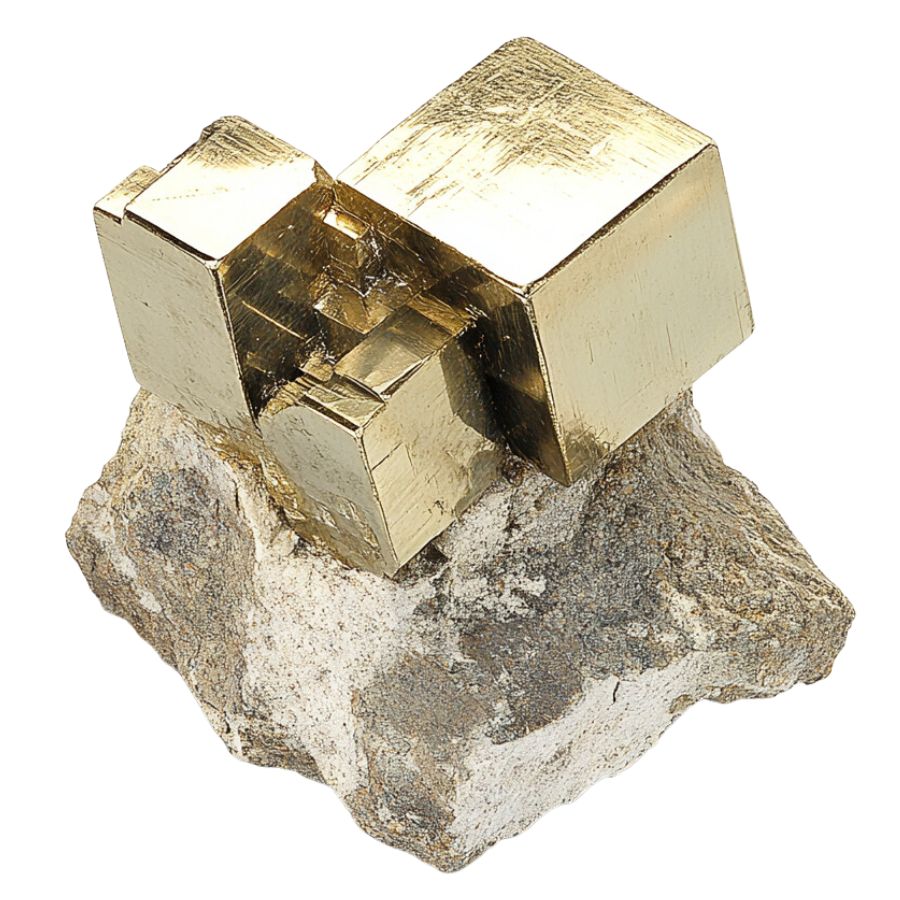
Often mistaken for gold due to its metallic luster and pale brass-yellow hue, pyrite is known colloquially as “fool’s gold.” Its characteristic cube-shaped crystal formations look man-made but are actually completely naturally formed!
Pyrite also has historical importance in producing sulfur dioxide for sulfuric acid production.
Rhodochrosite
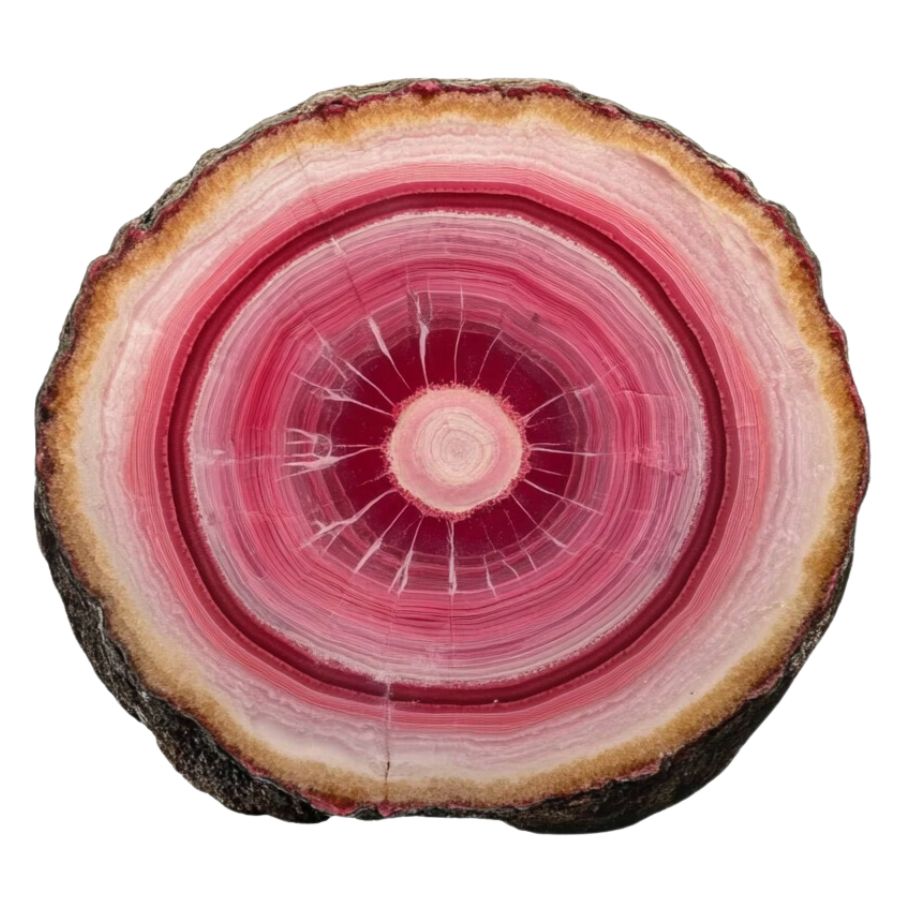
Rhodochrosite stands out with its rich pink and red hues, making it highly desirable as both a mineral specimen and a gemstone.
It typically forms in layered or stalactitic structures, with bands of colors that showcase how it grew over millions of years.
Beyond its beauty, rhodochrosite is significant as the main source of manganese, an essential element used in metal alloys.
Rhodonite
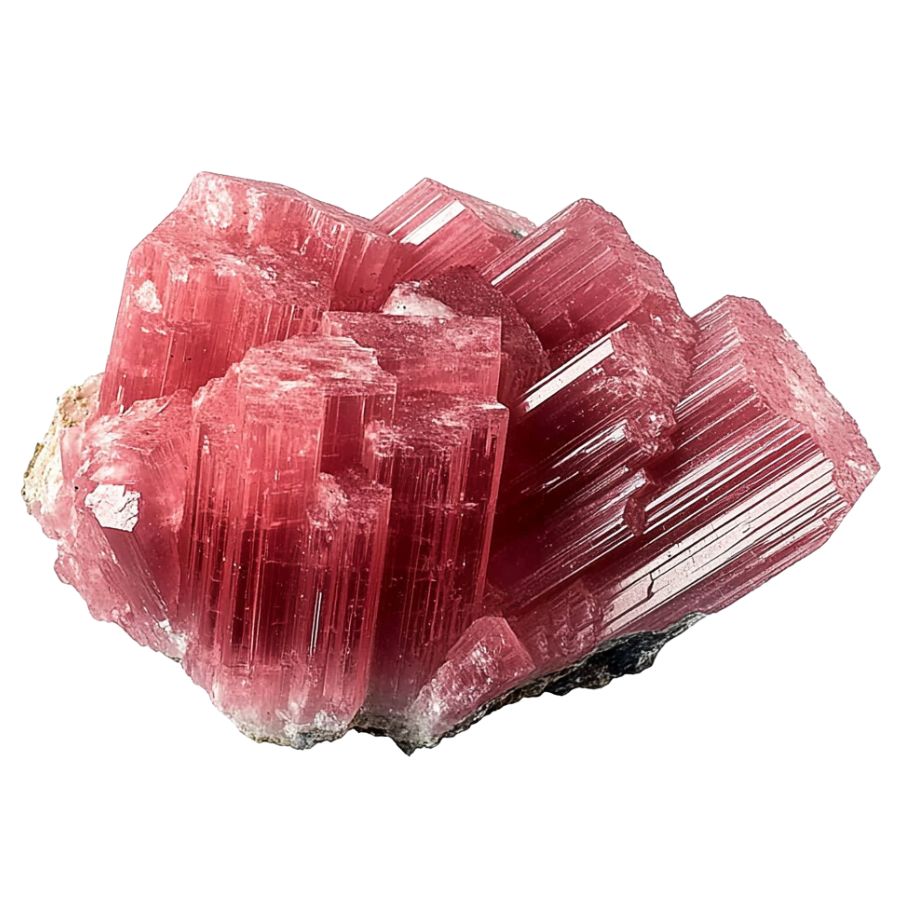
Appreciated for its deep pinks and reds, often complemented by black manganese oxide veins, rhodonite presents a dramatic appearance. It is typically found in metamorphic rocks and is used both as an ornamental stone and in jewelry.
In geology, rhodonite is significant for its role in metamorphic processes and its association with other manganese-rich minerals. It can be found in metamorphosed sedimentary rocks and is sometimes used as an indicator of the presence of manganese deposits.
Vivianite
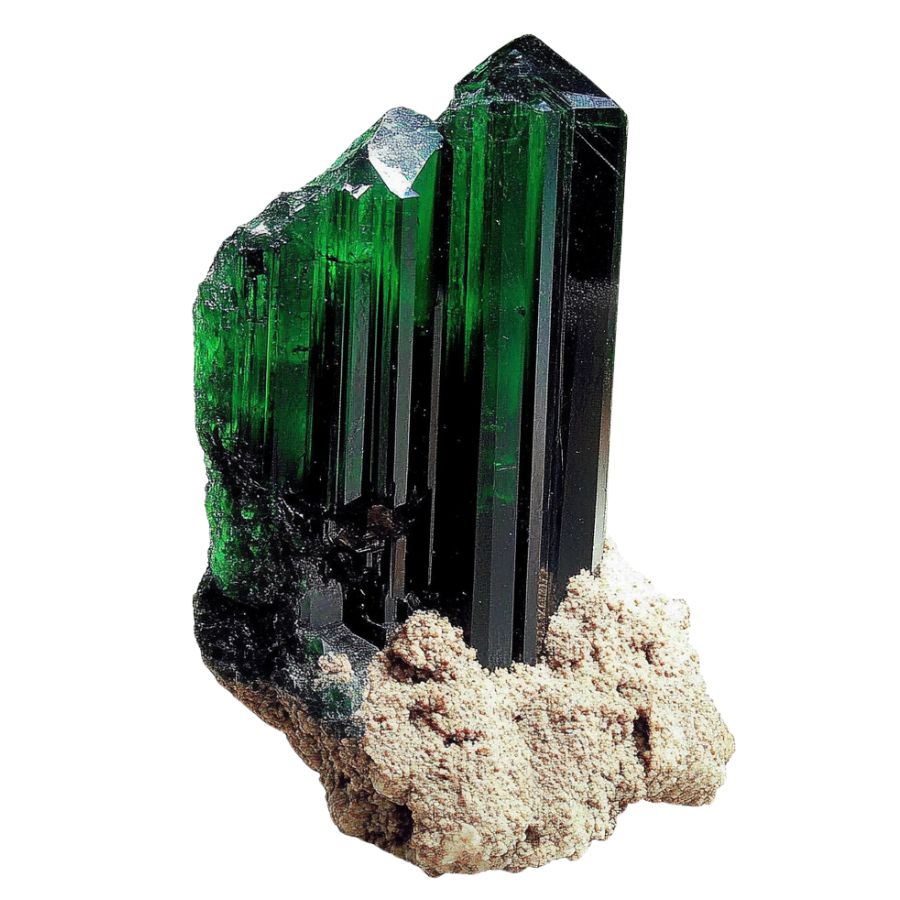
Vivianite, an iron phosphate mineral, emerges in low-oxygen environments like peat bogs or iron-rich deposits. Its striking blue to green color, which can change to a lighter shade over time due to oxidation, makes it a distinctive mineral.
Found in various geological settings, vivianite provides clues about the local conditions and the presence of phosphate deposits.
The Types of Oklahoma Crystals You Can Find
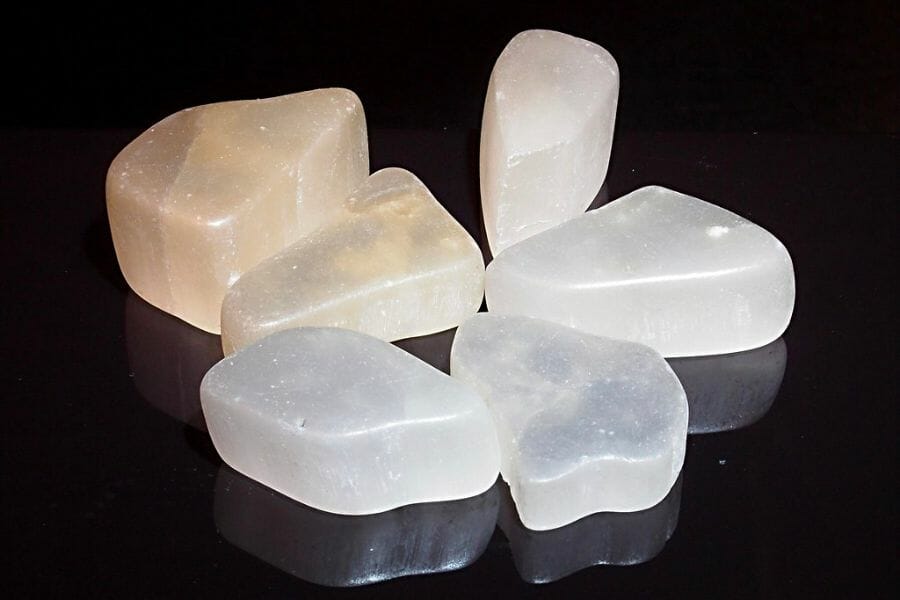
Oklahoma is known for its vast natural resources and diverse landscapes, which prove to be great areas for crystal hunting enthusiasts to enjoy. You can find various types of crystals here that come in varying colors, shapes, and sizes, making each find unique and exciting. Here are some of them:
Rare crystals found in Oklahoma
- Amber
- Aragonite
- Copper
- Halite
- Opal
- Prehnite
- Selenite
- Ulexite
More common crystals found here
- Agate (Rose)
- Azurite
- Calcite
- Carnelian
- Chalcedony
- Chalcopyrite
- Epiote
- Fluorite
- Galena
- Hematite
- Jasper
- Malachite
- Pyrite
- Quartz (Clear and Smoky)
What rough crystals look like
When you’re out looking for crystals on your own it’s important to know what you’re looking for. This is what you need to look out for:
Look for exteriors like this
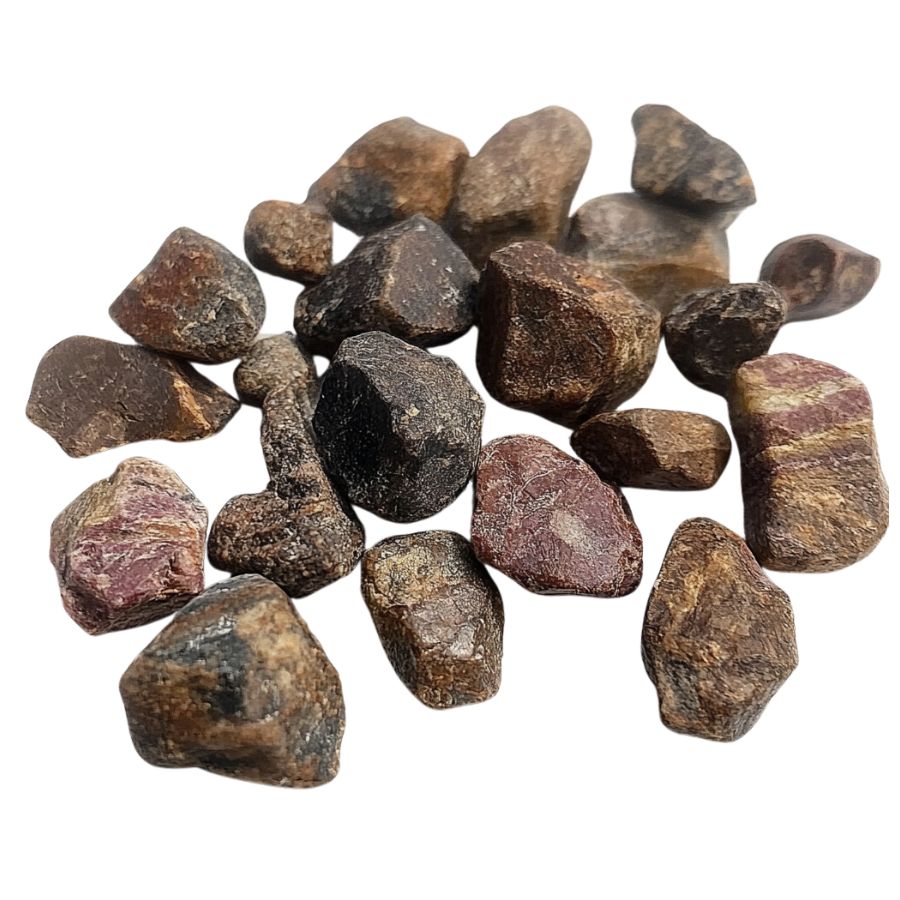
When you’re out searching for crystals in the wild, it’s essential to keep in mind that what you find won’t look like the polished stones you see in stores. One important tip is to consider what certain crystals look like in their raw, natural form.
Without the shine and smooth finish, crystals might appear rough, with jagged edges or earthy tones masking their true beauty. Understanding this can help you spot potential finds that might otherwise be overlooked.
Examine the crystal structure and shape
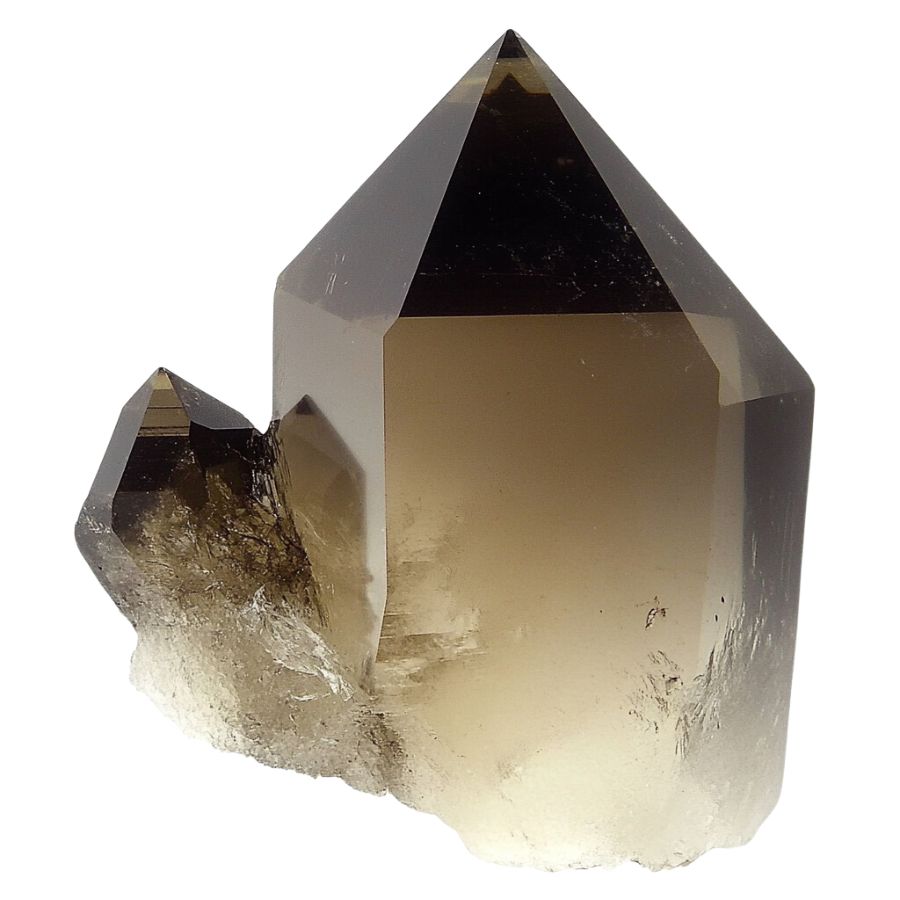
Crystals often form in specific geometric patterns that can be key to identifying them. For example, quartz is known for its hexagonal prisms, while halite typically forms cubic shapes.
By recognizing these distinct patterns, you can differentiate between various types of crystals and better understand what you’ve found.
Observe color
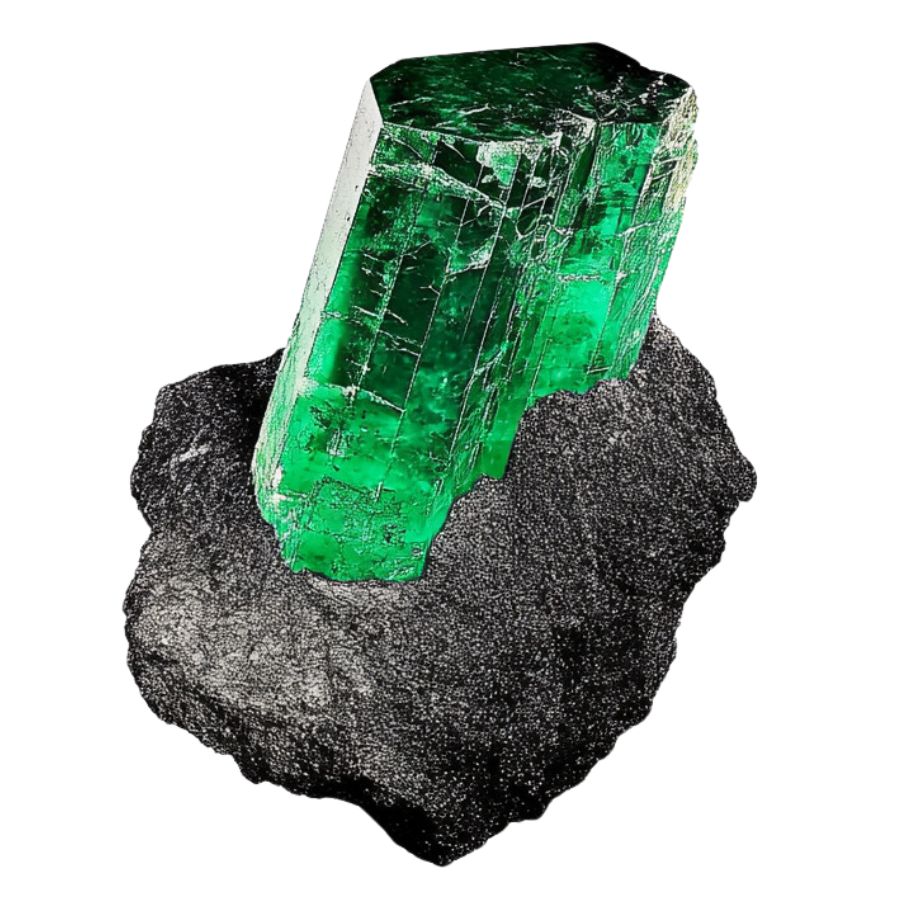
Some crystals are known for their distinct hues, like the deep purple of amethyst or the vibrant green of emerald. However, not all crystals will have strong colors; some may be clear or only slightly tinted.
Check the luster
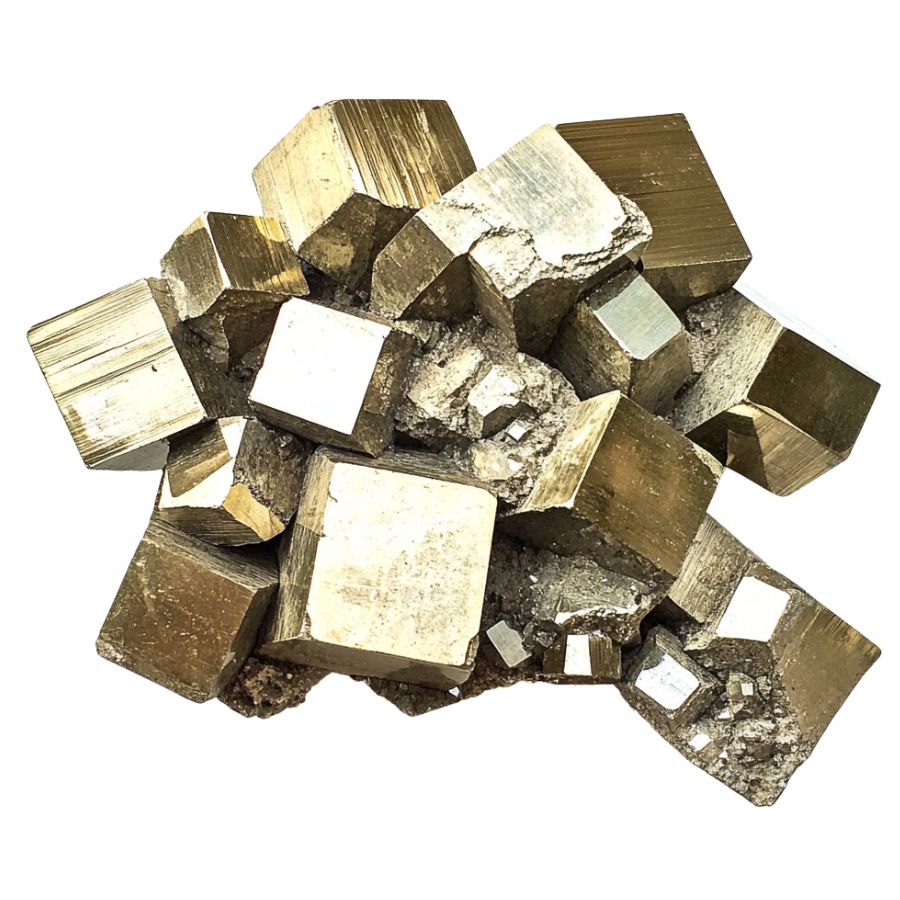
Luster refers to how a crystal’s surface interacts with light. Some crystals might have a shiny, glassy luster, while others may appear metallic or dull. This characteristic can help you determine the type of crystal you’ve found.
However, it’s important to remember that luster isn’t always obvious right away. In some cases, a crystal’s true luster will only become apparent after it’s been cleaned or polished, so keep this in mind as you examine your finds.
Evaluate the transparency
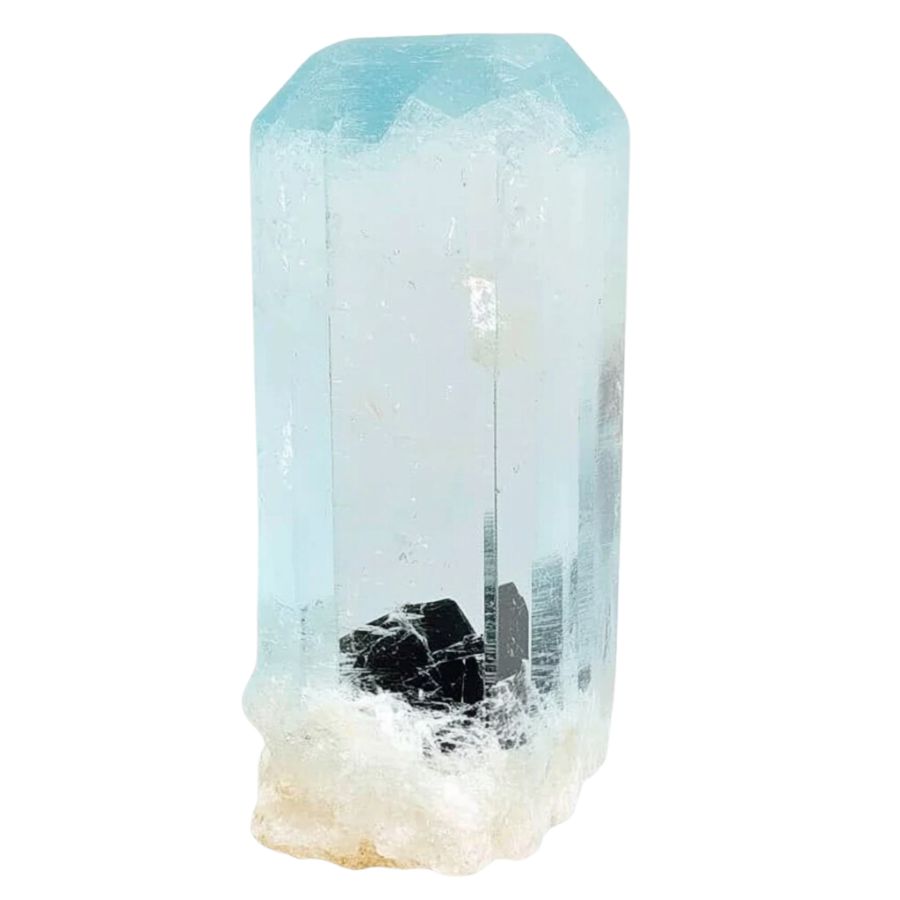
Pay close attention to how much light passes through the crystal. Some crystals are completely clear, allowing light to pass through easily, while others may be opaque and block light entirely.
You might also encounter crystals with translucent edges but opaque centers. These variations in transparency can offer valuable clues about the type of crystal you’ve found, making it easier to identify and appreciate your discovery.
A Quick Request About Collecting
Always Confirm Access and Collection Rules!
Before heading out to any of the locations on our list you need to confirm access requirements and collection rules for both public and private locations directly with the location. We haven’t personally verified every location and the access requirements and collection rules often change without notice.
Many of the locations we mention will not allow collecting but are still great places for those who love to find beautiful rocks and minerals in the wild without keeping them. We also can’t guarantee you will find anything in these locations since they are constantly changing.
Always get updated information directly from the source ahead of time to ensure responsible rockhounding. If you want even more current options it’s always a good idea to contact local rock and mineral clubs and groups
Tips on where to look
Having a better idea of where to look can greatly narrow down your search and increase your chances of finding crystals. By focusing on environments where crystals are likely to be exposed, you can spend less time searching and more time discovering.
Outcrops and Exposed Rock
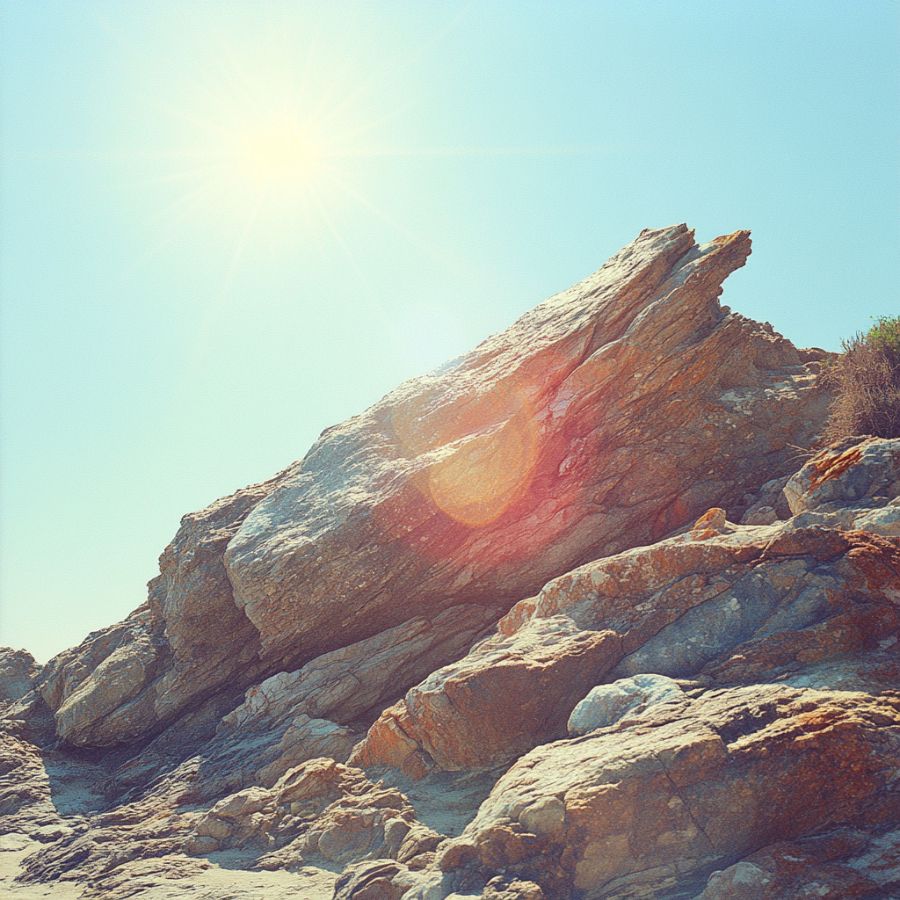
Rocky outcrops are prime locations for finding crystals and minerals. Search along the edges of outcrops, particularly where erosion has worn away the surrounding soil, revealing the rock underneath.
Pay close attention to any visible cracks, crevices, or small cavities within the outcrop, as these are often where crystals develop and can be extracted with minimal effort.
Stream Beds and Gravel Deposits
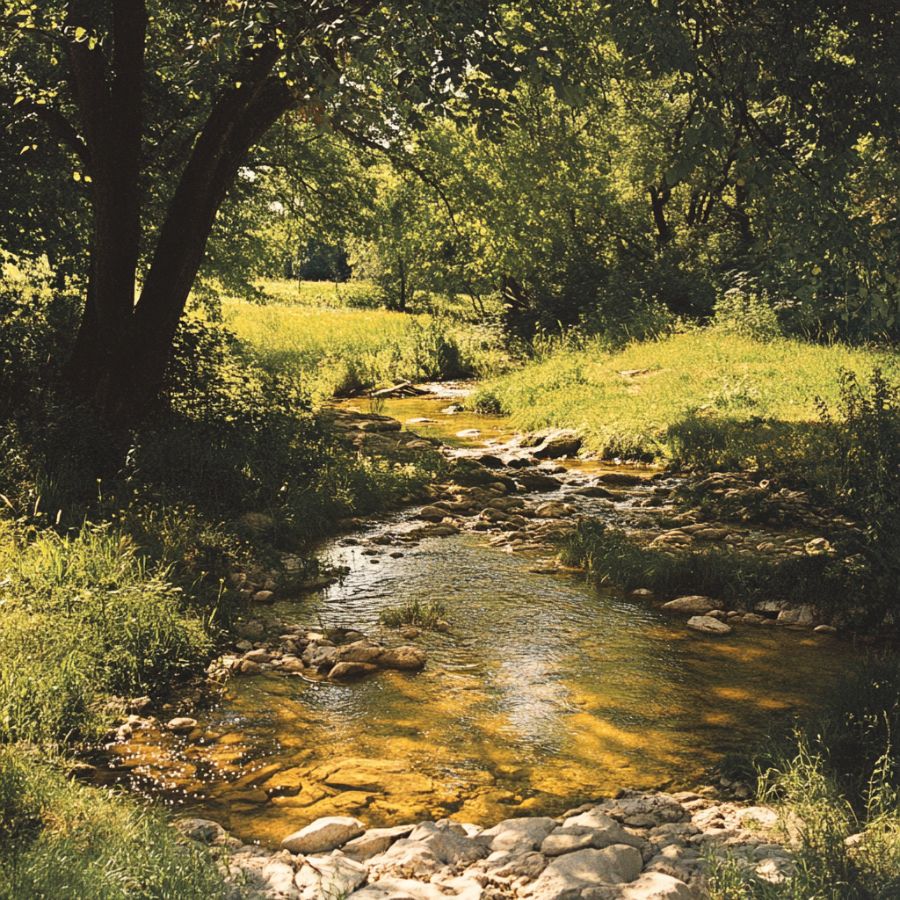
Stream beds are dynamic environments where water flow constantly shapes the landscape. Over time, water can erode rocks upstream, breaking them down and carrying mineral fragments, including crystals, downstream.
When searching in these areas, look for spots where the current has slowed, such as bends in the stream or areas behind large rocks, as these are prime locations for deposits.
Quarries and Mines
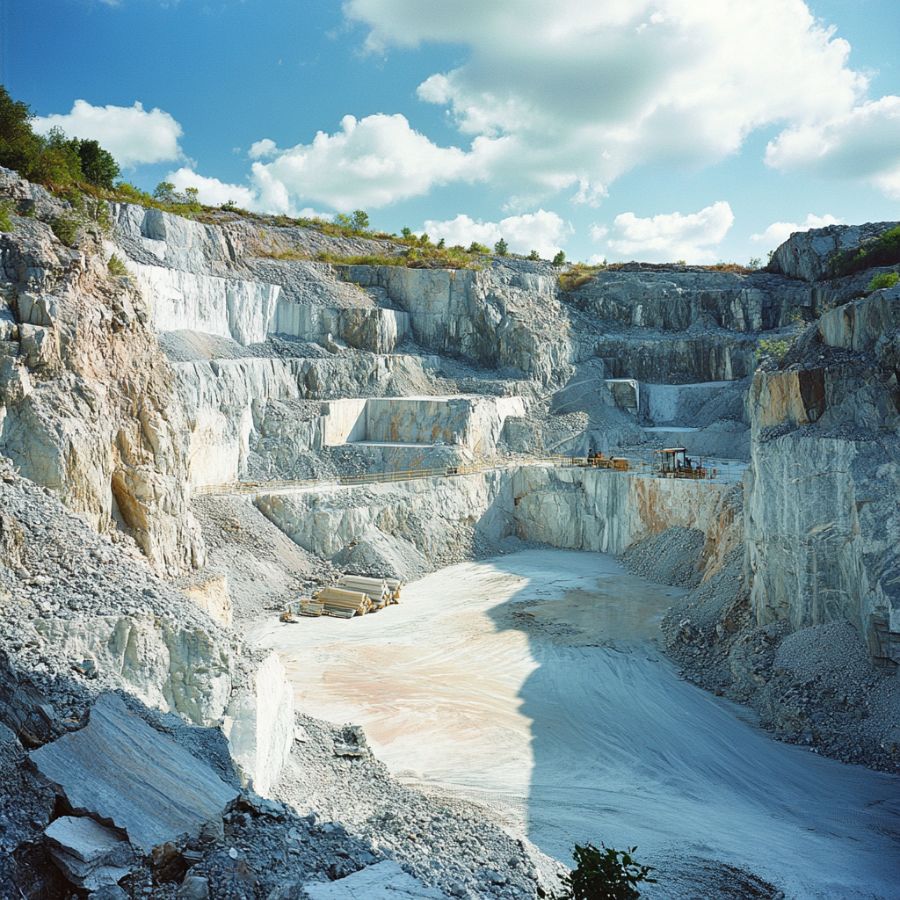
Quarries and mines are excellent places to search for crystals because they expose deep layers of rock that would otherwise be hidden beneath the surface. These sites often contain a variety of minerals and crystals that have been brought to the surface during excavation.
Pay attention to tailings piles, where waste rock is discarded, as they often contain overlooked or broken crystals. Always prioritize safety when exploring these areas and ensure that you have permission to search.
Road Cuts and Construction Sites
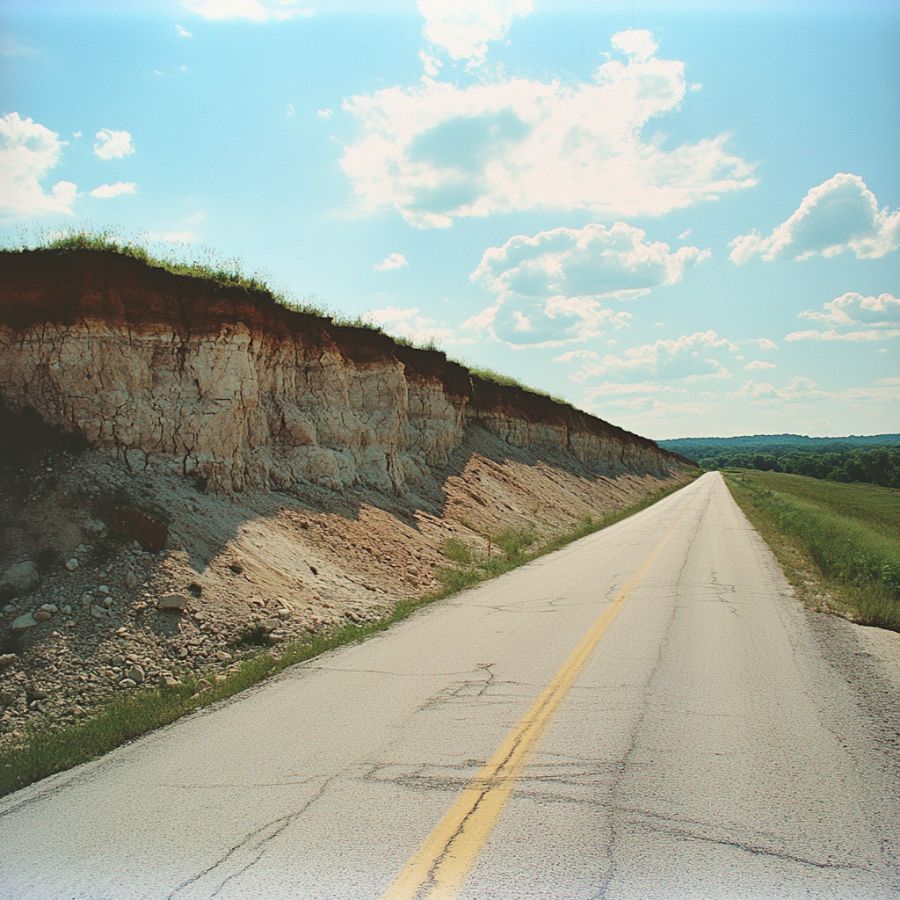
As roads are cut through hillsides or construction projects dig deep foundations, layers of rock and soil that have been undisturbed for millions of years are suddenly exposed.
Look for freshly exposed rock faces, especially where blasting has occurred, as this can create fissures or expose pockets filled with crystals. Be cautious around active construction sites, and always seek permission before exploring.
Mountainous Areas

In mountainous regions, erosion caused by wind, rain, and ice can wear away the softer rock, exposing harder crystals that have formed within. Focus on weathered and broken rock formations.
Look for scree slopes, where loose rock has accumulated at the base of cliffs. Additionally, areas near fault lines or volcanic vents are particularly promising, as they often have a higher concentration of minerals.
DON'T MISS OUT ON ANY GREAT FINDS!
While you're out searching for Crystals you're going to find A LOT of other interesting rocks and minerals along the way. The last thing you want to do is toss out something really interesting or valuable. It can be easy to misidentify things without a little guidance.
We've put together a fantastic field guide that makes identifying 140 of the most interesting and valuable rocks and minerals you will find REALLY EASY. It's simple to use, really durable, and will allow you to identify just about any rock and mineral you come across. Make sure you bring it along on your hunt!
Oklahoma Crystal Mining Laws And Regulations
The great news is that crystal mining is perfectly legal in Oklahoma, provided that you follow our state’s local laws governing this activity, especially those from the Oklahoma Department of Mines.
Generally, you need to obtain any necessary permits or permission from concerned offices and individuals, like government agencies for government lands and land owners for private lands.
Also, make sure to respect any regulations in place to protect the environment and wildlife in our state. By following these rules, we are helping promote responsible crystal mining practices that ought to be emulated.
- The extensive local experience and understanding of our team
- Input from multiple local crystal hunters and crystal collecting groups
- The accessibility of the crystal mining locations
- Safety and potential hazards when collecting
- Private and public locations
- A desire to include locations for both experienced crystal hunters and those who are just starting out
Using these weights we think we’ve put together the best list out there for those who love finding new crystals for our collections!
The Best Locations For Crystal Mining in Oklahoma
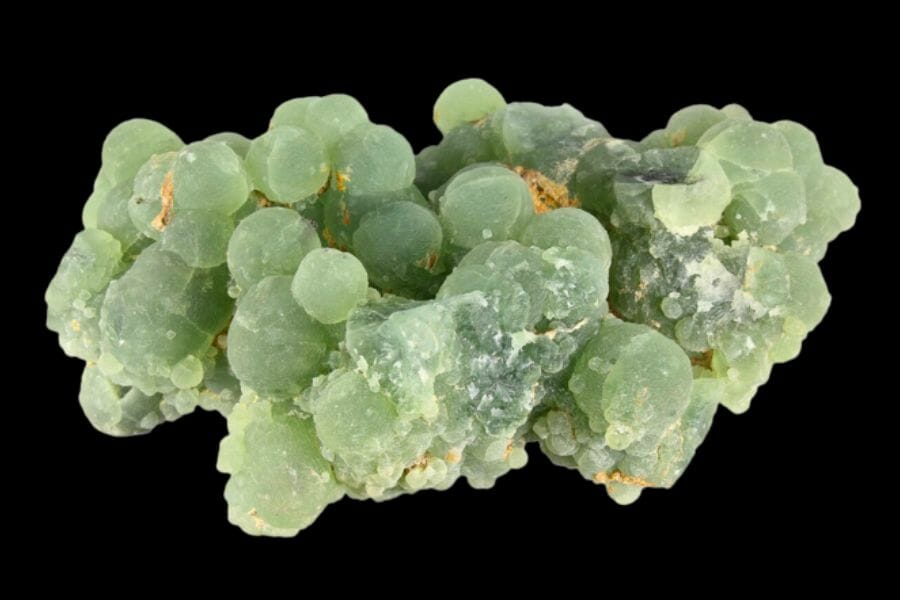
First, let’s discuss our top recommended places to find Oklahoma crystals. If you only have enough time to visit a few areas, then these classic sites should be on top of your list, too.
Always Confirm Access and Collection Rules!
Before heading out to any of the locations on our list you need to confirm access requirements and collection rules for both public and private locations directly with the location. We haven’t personally verified every location and the access requirements and collection rules often change without notice.
Many of the locations we mention will not allow collecting but are still great places for those who love to find beautiful rocks and minerals in the wild without keeping them. We also can’t guarantee you will find anything in these locations since they are constantly changing.
Always get updated information directly from the source ahead of time to ensure responsible rockhounding. If you want even more current options it’s always a good idea to contact local rock and mineral clubs and groups
Great Salt Plains State Park is Our Favorite Crystal Mine in Oklahoma
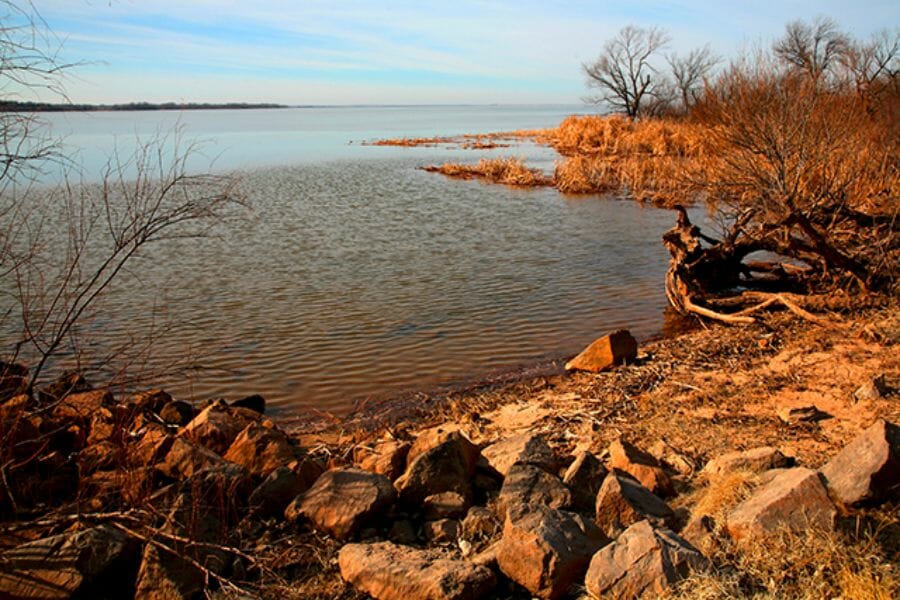
Rt 1 Box 28, Jet, OK 73749
Covering an area of about 9,000 acres, Great Salt Plains State Park is located in Alfalfa County. It’s home to the largest salt flat in the central United States, which was formed around 250 million years ago when an ancient ocean evaporated, leaving behind a thick layer of salt. The park was established in 1941 and has since become a popular destination for crystal hunters. In fact, it’s a well-known site for gem mining in Oklahoma, too.
The salt flat is covered with shallow saltwater ponds that are rich in Selenite crystals known for its clear, glass-like appearance. These crystals form as the saltwater evaporates, leaving behind deposits of Selenite. The crystals range in size, from small shards to large, impressive pieces.
When you visit here, you can dig in the shallow waters to find these beautiful specimens. Additionally, the park allows visitors to collect up to 10 pounds of crystals per day, which is more than enough to start or add to your collection.
Where we found crystals at Great Salt Plains State Park
Basically, you can find different types of crystals in the different parts and areas of the Great Salt Plains State Park. Most likely, though, you’ll be able to find high quality, hourglass Selenite crystals and Halite crystals here.
DON'T MISS OUT ON ANY GREAT FINDS!
While you're out searching for Crystals you're going to find A LOT of other interesting rocks and minerals along the way. The last thing you want to do is toss out something really interesting or valuable. It can be easy to misidentify things without a little guidance.
We've put together a fantastic field guide that makes identifying 140 of the most interesting and valuable rocks and minerals you will find REALLY EASY. It's simple to use, really durable, and will allow you to identify just about any rock and mineral you come across. Make sure you bring it along on your hunt!
Carrizozo Creek
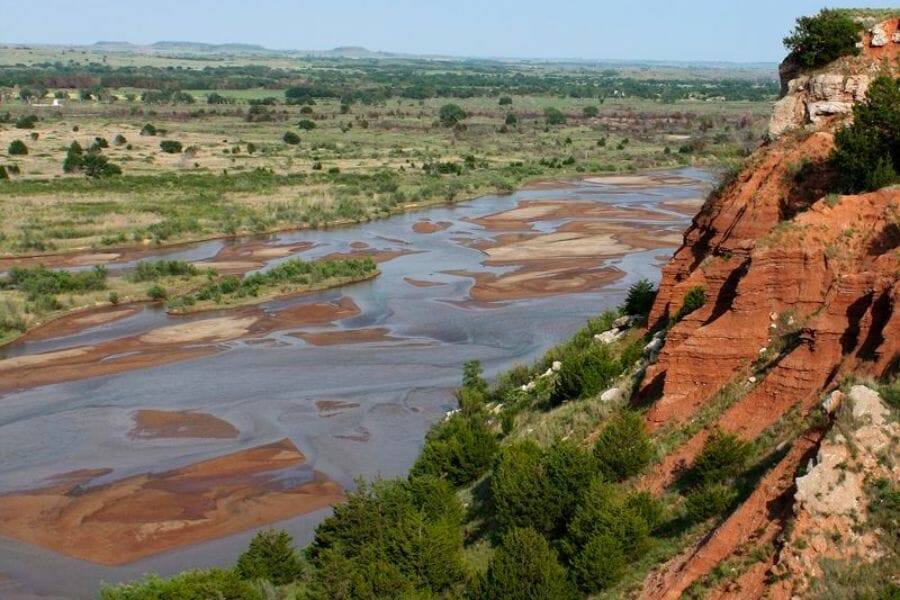
Kenton, Cimarron County, OK
Carrizozo Creek is known for its unique geology and crystal formations. The area has been a popular spot for rockhounds for many years due to the abundance of minerals found here. In fact, it’s among the best sites in Oklahoma to find crystals.
The surrounding hills at the creek are made up of limestone and shale, while the waters of the creek itself runs through a sandstone bed. This combination of rocks creates the perfect environment for crystal formation.
Carrizozo Creek rightfully belongs to our to recommendations because, firstly, it’s easily accessible and doesn’t require any strenuous hiking. Secondly, the crystal formations found here are unique and beautiful and make for great additions to any rock collection. Lastly, the creek bed provides a great opportunity for rockhounds to find specimens that have been washed down from the surrounding hills.
Where we found crystals at Carrizozo Creek
You can find some very interesting and fascinating samples of Rose Agates if you explore the gravels of Carrizozo Creek. Wondering how much does this crystal cost? Read our article on that!
Miami
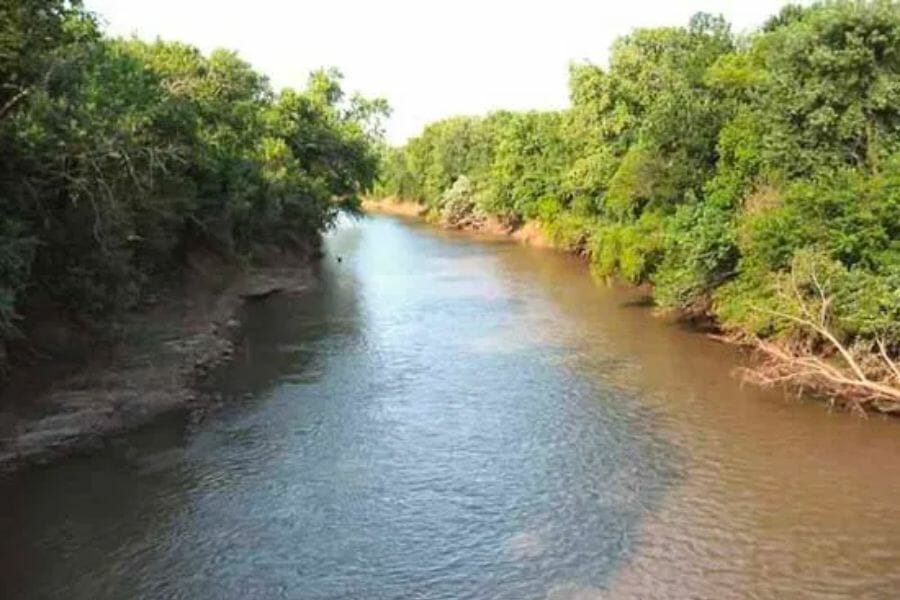
Ottawa County, OK
Miami is located in the northeastern part of our state. Aside from its abundant crystals and minerals, this place is also known for its rich mining history dating back to the late 1800s, when Lead and Zinc were discovered in this area. Today, Miami is home to several abandoned mines and quarries that have become popular spots for rockhounds.
This region is characterized by rolling hills and valleys, and the surrounding rocks are mostly made up of limestone, shale, and sandstone. Because of these combination of rocks, crystals were formed.
Since the area has a rich mining history, there are plenty of abandoned mines and quarries to explore here. The surrounding hillsides and creek beds also provide great opportunities for rockhounds to find specimens that have been washed down from the mines and quarries. And if you’re planning to go here, it would be easy since it’s located in close proximity to other popular rockhounding destinations like Joplin, Missouri and the Tri-State Mining District.
Where we found crystals in Miami
We highly recommend exploring the Lead-Zinc district mines and quarries in Miami, which are are important contributors to the Tri-State District Mineral production. Within 25 to 30 miles of Miami, specifically in around the mining towns of Picher, Cardin, Century, and Quapaw, you can also explore some major producing mines. Here, you can find amazing samples of Aragonite, Calcite, Chalcopyrite, Galena, Pyrite, and Quartz crystals, among others.
Spavinaw Lake
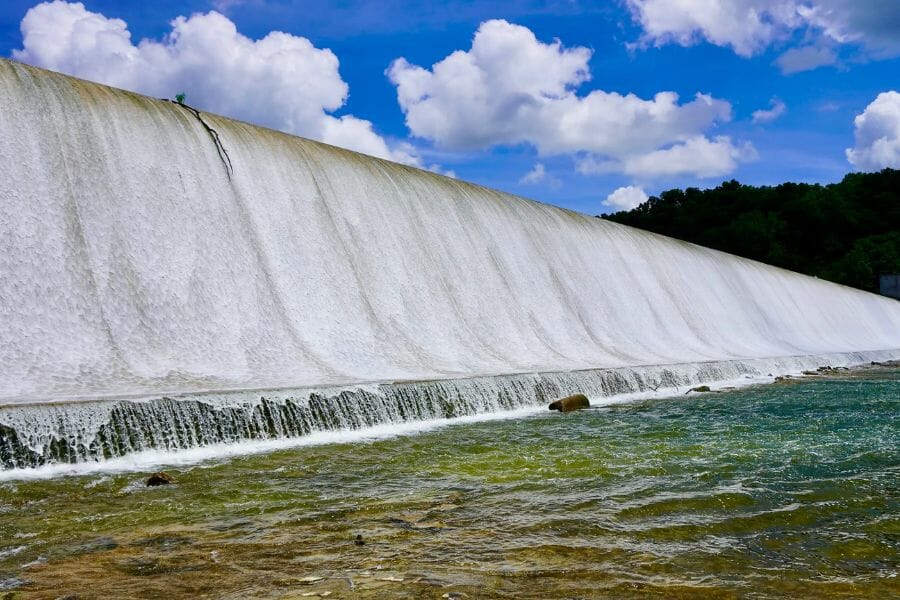
Mayes County, OK
With its beautiful scenery and rich resources, Spavinaw Lake belongs to our top recommended classic crystal hunting sites. It was created as a source of drinking water for nearby cities and is surrounded by rolling hills and scenic vistas, making it a popular destination for outdoor enthusiasts. But what makes Spavinaw Lake particularly interesting for rockhounds is the abundance of crystals that can be found here.
The lake is surrounded by limestone and sandstone, which create the ideal environment for crystals to form. The area is easily accessible and is located within driving distance of major cities like Tulsa and Joplin, so if you’re planning to visit, know that you won’t have a hard time reaching it. The surrounding hillsides and creek beds also provide great opportunities to find specimens that have been washed down from the surrounding hillsides. And as cherry on top, the lake itself is a beautiful backdrop for rockhounding adventures.
When you visit here, be prepared to do some light hiking as the best specimens are often found on the surrounding hillsides. It’s also important to be cautious when exploring the area, as it is a popular spot for outdoor enthusiasts and there may be restrictions on where you can collect specimens.
Where we found crystals at Spavinaw Lake
You can get your hands on the best samples of Galena, Pyrite, and Quartz crystals in our state if you search for them in area to the west of the dam in Spavinaw Lake.
Tahlequah
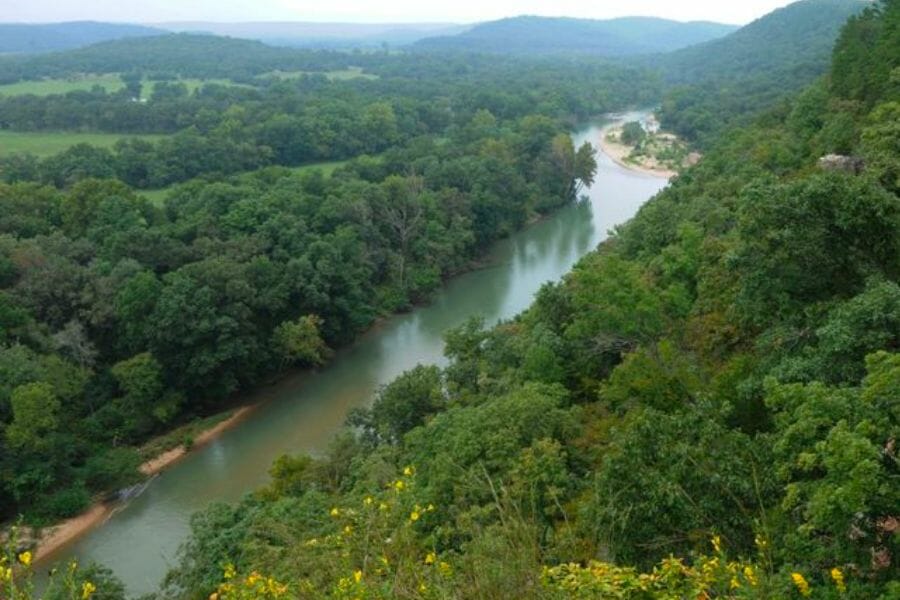
Cherokee, OK
Tahlequah is a charming city located in the northeastern part of our state. It’s not only rich in history and culture, but also offers great opportunities for rockhounds to find beautiful crystals and minerals.
This city has a long and fascinating history, as it was once the capital of the Cherokee Nation. It’s located in the foothills of the Ozark Mountains, which is known for its unique geology and abundance of crystals. The surrounding hillsides and creeks provide rockhounds with a variety of opportunities to find different crystal specimens.
The area is comprised of limestone, sandstone, and shale formations, which aids in crystal formation. That’s why rockhounds can often find pockets of crystals hidden within the rocks. You can also find Oklahoma crystals along the creek bed of Illinois River, which is very near Tahlequah.
So why would Tahlequah be a great place to find crystals? Aside from its accessibility and richness in crystals, the city itself offers a variety of accommodations and restaurants, making it a great base camp for your rockhounding adventures.
Where we found crystals at Tahlequah
The road cut west of Illinois River proves to be the best area here to find interesting crystals, like Pyrites. We would suggest exploring there first before going through the other parts of the city.
Our Other Favorite Places For Crystal Hunting
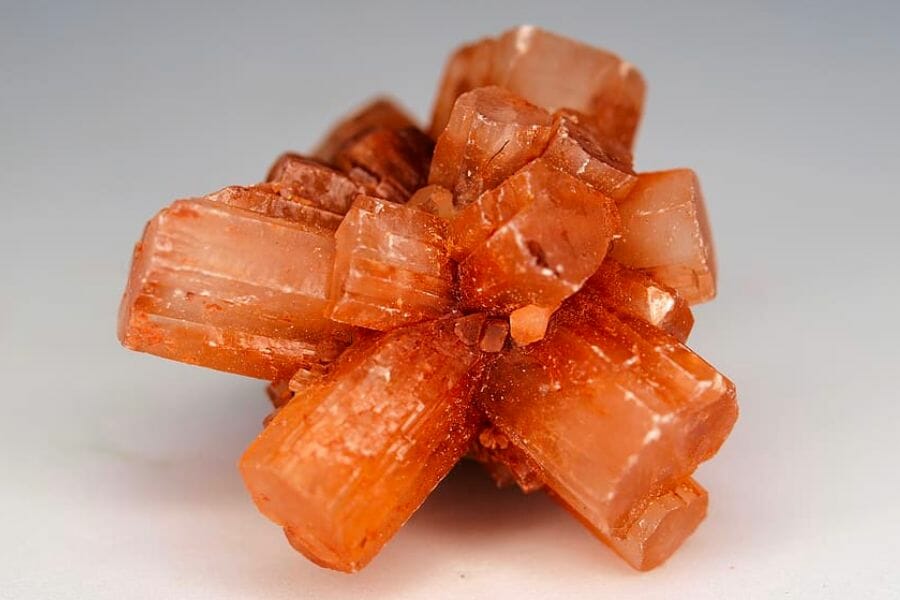
A state as big— and as well-endowed— as Oklahoma doesn’t easily run out of classic sites to find crystals, so aside from our top 5 recommended places, here are some more spots that you can explore for crystals. Many of these spots also prove to be amazing sites to find Oklahoma geodes.
Where you can find crystals for free in Oklahoma
You may be aware that, more often than not, the best places to explore for crystals often require some fee. So we decided to separate and discuss with you first the areas that you can visit for free. Of course, finding crystals here is free, too!
| County | Location |
| Alfalfa | 0.5 miles south at the Cherokee Gravel Pit |
| Beckham | Area quarries of Elk City |
| Caddo | On the Canadian River at the Tindel Company Gravel Pit |
| Canadian | At the Dolese County Gravel Pit |
| Dewey | At Seiling, Taloga area |
| Ellis | Gravel pits and sand pits along Wolf Creek |
| Grant | At copper prospect in Salt Fork area |
| Harmon | 0.75 miles south of McKnight area at the Wilkerson Gravel Pit |
| Johnston | Ravia, Reagan, Tishomingo, and Troy area gravel pits |
| Kiowa | Along the south shore of the Washita River |
| Major | In tablelands of the Glass Mountains |
| Noble | At abandoned copper prospect at Perry area |
| Osage | In quarry just west of Gray Horse area |
| Pushmataha | Antlers area |
| Stephens | In the cut banks of Little Beaver Creek |
| Tulsa | At the Tiger Quarry |
| Woods | 10 miles north-northwest of Tegarden area |
Other great places to dig for crystals
Meanwhile, here are the classic sites that require some fee if you want to find crystals in them. Usually, these fees vary depending on the season (sometimes, it could even be free!), so make sure to reach out to these places first before heading out.
| County | Location |
| Craig | 2 miles east-southeast at the Bill Patch Strip Coal Mine |
| McCurtain | 1 mile from the Arkansas border at the Johnson Copper Mine, at the Eades Mine on Mountain Fork, and at the Buffalo Creek mines and prospects |
| Okfuskee | Mine road going southeast from Prague |
| Ottawa | Picher area mines |
| Pawnee | At abandoned copper mine in Pawnee area |
The Best Crystal Shops In Oklahoma

If you simply want to find a specific crystal that will complete your collection, you may opt to visit the local crystal shops here that offer the best selections of crystals. Who knows, you might find the next crystals that will belong to your collection in some of these shops:
- Good Earth Rocks Gallery – 824 N Broadway Ave, Oklahoma City, OK 73102
- Cosmic Flora Crystals – 111 N Broadway Ave, Moore, OK 73160
- Nature’s Treasures – 6223 SE 15th St, Midwest City, OK 73110
- Earthy Girl – 3027 SE 44th St, Oklahoma City, OK 73135
- The Spunky Cauldron – 1020 NW 192nd St Suite F, Edmond, OK 73012
- UnearthedOKC – 4700 S Bryant Ave, Oklahoma City, OK 73135
- Earth and Soul – 128 N Main St, Sand Springs, OK 74063
- Crystal Cactus Lifestyle Shop – 45 Foley Ave, Eufaula, OK 74432
- Craig’s Curious Emporium – 1209 NW 23rd St, Oklahoma City, OK 73103
- The Celtic Moon – 124 W Main St Suite#2, Ardmore, OK 73401
Additional places to find crystals in nearby states
If you’ve already tried all of our recommendations above or are planning a trip out of the state, you should check out our guides for neighboring states:
- Crystals in Kansas
- Crystals in Missouri
- Crystals in Arkansas
- Crystals in Texas
- Crystals in New Mexico
- Crystals in Colorado
If you have any recommendations we haven’t covered, please leave them in the comments below!

